Born in Kyjov, Austro-Hungarian Empire, in 1902. Murdered in Sachsenhausen in 1944.
"A diligent bird is Mr. Plaček.
Two or three lines – is that me?
I wish the maker of the drawing
an extra food ration for the whole year."Norbert Frýd, 1943Bella Shomer-Zaitchik, Double signature: Portraits of Personalities from the Terezin Ghetto - Max Plaček (ex. cat.), Yad Vashem Art Museum, Jerusalem, Spring 1994, p. 67.
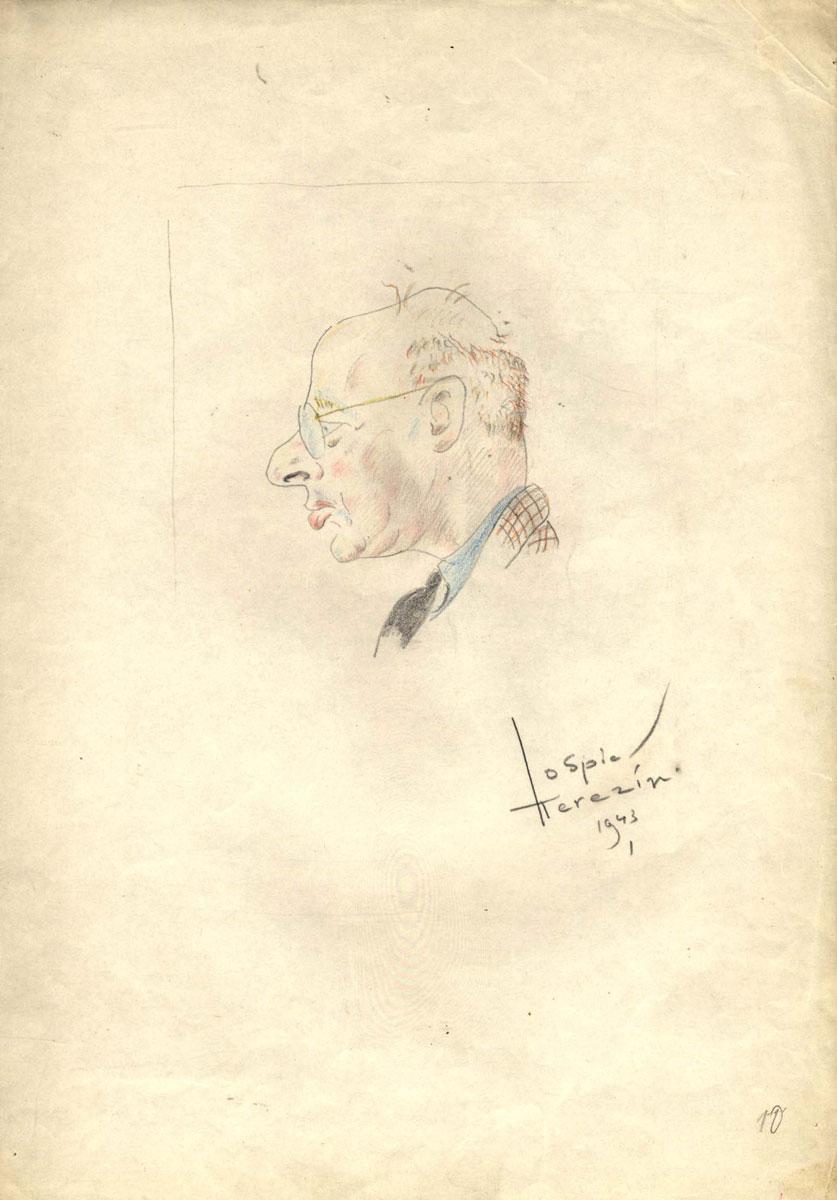
Illustrator and caricaturist. Worked in the Technical Department in the Theresienstadt Ghetto.
Born in 1900, Zutphen, Netherlands. On February 22, 1943, deported to the Theresienstadt Ghetto, with his father, his wife and son. Spier, his wife and son were liberated on May 1945. After the war, they returned to Holland and in 1951 immigrated to the Unites States. Died in 1978 in New York.
Colored pencil on paper
29.8X21 cm
Collection of the Yad Vashem Art Museum, Jerusalem
Gift of Herman Weiss, courtesy of Dr. Stephen Barber, Canada

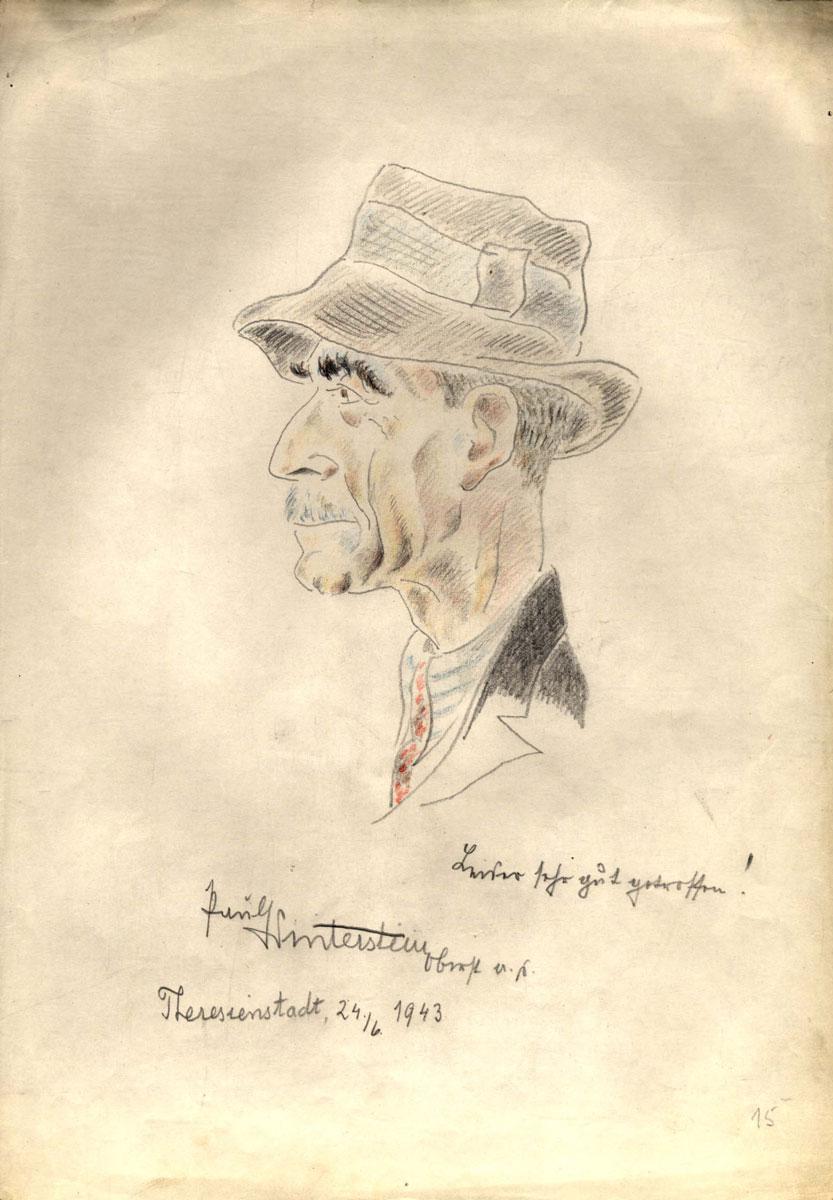
Retired General in the Austrian Army.
Born in 1876, Jičín, Austro-Hungarian Empire. Lived in Vienna. On October 10, 1942, deported to the Theresienstadt Ghetto. Died of exhaustion on May 23, 1945, a few days after liberation.
Note by the model:
“Unfortunately, you have scored a bull’s-eye!“
Colored pencil on paper
29.7X21 cm
Collection of the Yad Vashem Art Museum, Jerusalem
Gift of Herman Weiss, courtesy of Dr. Stephen Barber, Canada

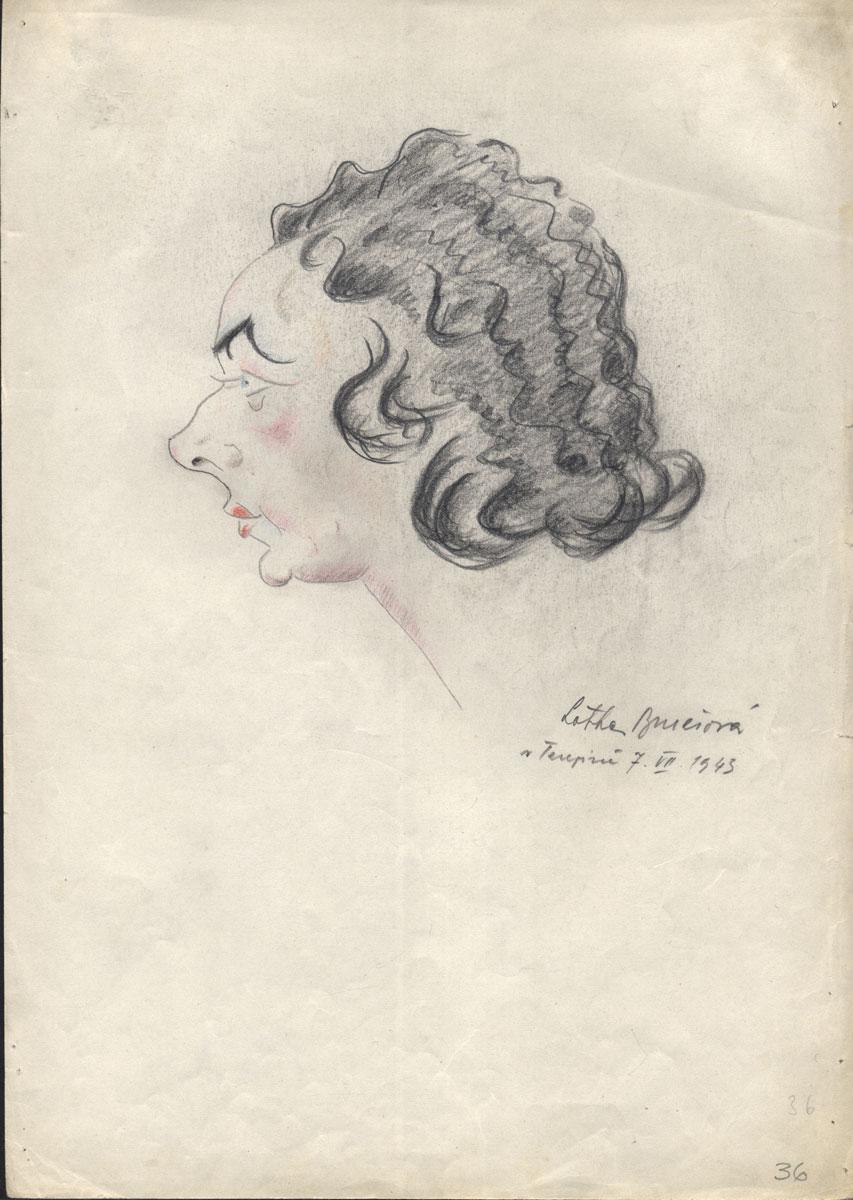
Artist. Worked at the ceramic workshop in the Theresienstadt Ghetto.
Born in 1904, Prague, Austro-Hungarian Empire. After the German occupation, divorced her non-Jewish husband in order to save their son from the transports. On July 1942, deported to the Theresienstadt Ghetto. After the war, returned to Prague and resumed her artistic activity until her death in 1983.
Colored pencil on paper
29.7X21 cm
Collection of the Yad Vashem Art Museum, Jerusalem
Gift of Herman Weiss, courtesy of Dr. Stephen Barber, Canada

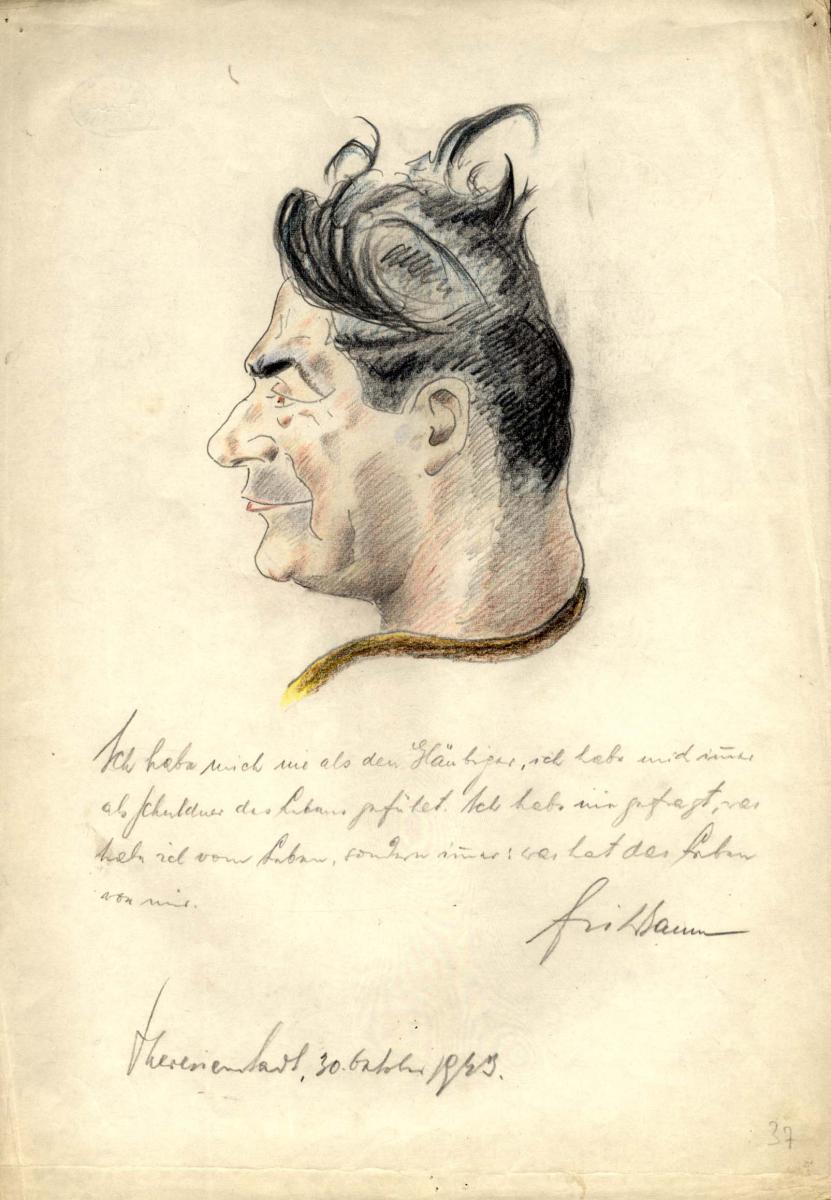
Head of the Palestine Office Student Commission, Prague.
Born 1889 in Pilsen, Austro-Hungarian Empire. In July 1943, deported to the Theresienstadt Ghetto. There, he gave lectures on topics related to Zionism. In October 1944, transported to Auschwitz, where he was murdered.
Note by the model:
“I have never seen myself as borrowing from life, only indebted to life. I have never asked what I receive from life, only what life received from me.”
Colored pencil on paper
29.8X21 cm
Collection of the Yad Vashem Art Museum, Jerusalem
Gift of Herman Weiss, courtesy of Dr. Stephen Barber, Canada

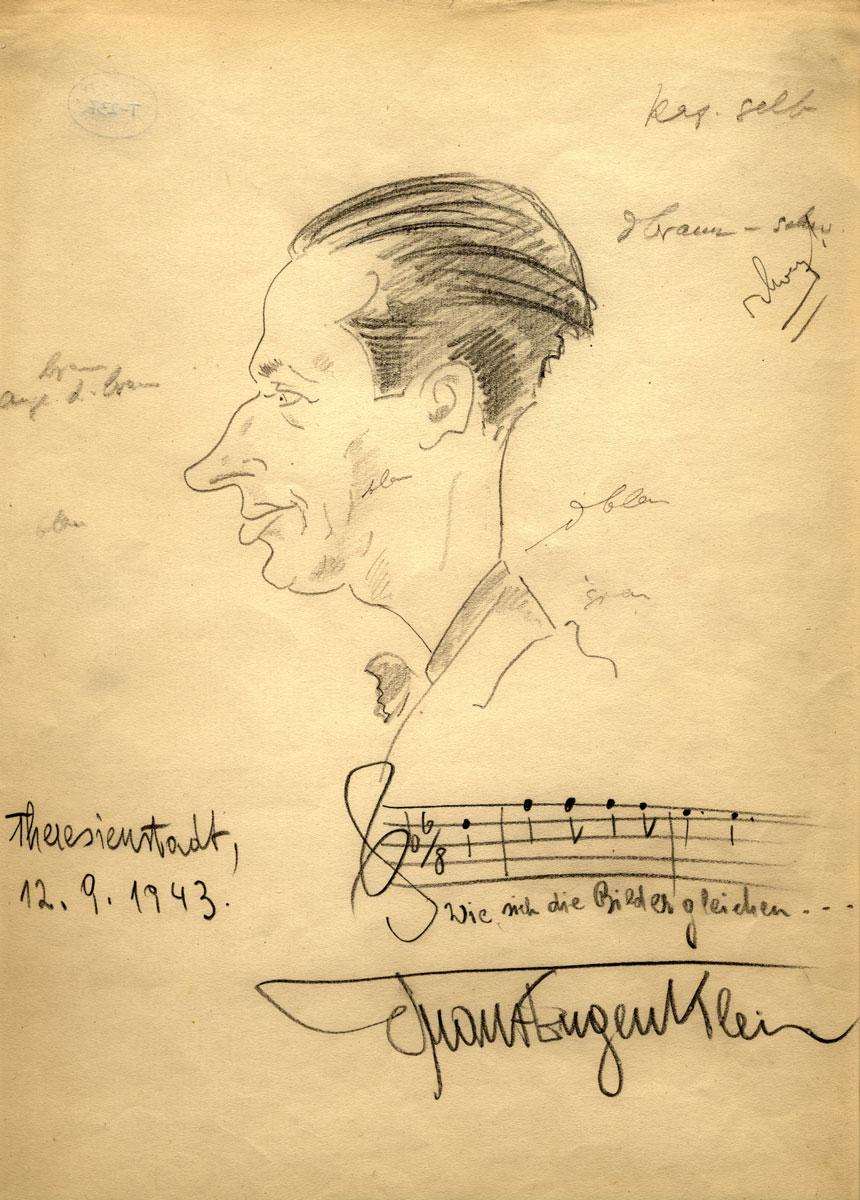
Pianist, composer and conductor.
Born in 1912, Vienna, Austro-Hungarian Empire. On October 10, 1942, deported with his wife to the Theresienstadt Ghetto. Transported together with his wife to Auschwitz on October 16, 1944, where he was murderded.
Note by the model:
“How much this picture resembles me...”
Pencil on paper
29.5X20.7 cm
Collection of the Yad Vashem Art Museum, Jerusalem
Gift of Herman Weiss, courtesy of Dr. Stephen Barber, Canada

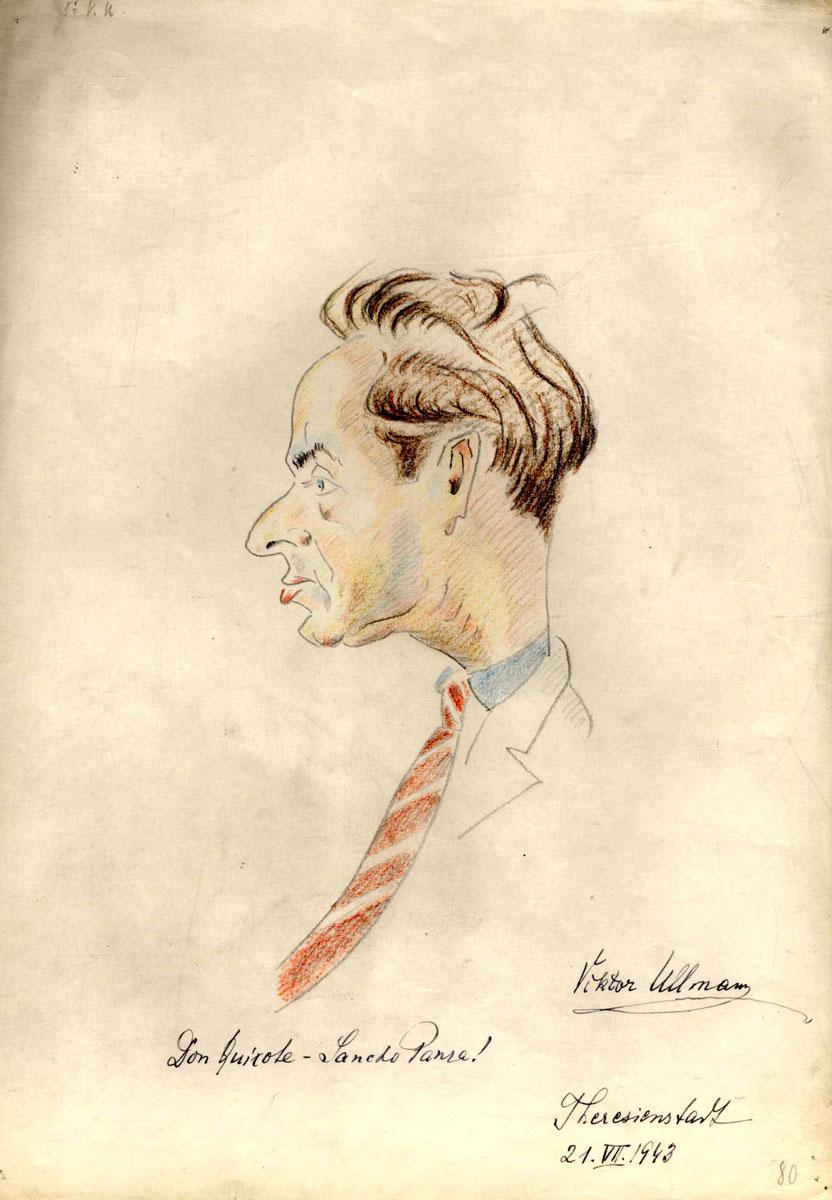
Musician and composer.
Born in 1898, Tĕšín, Austro-Hungarian Empire. Deported to the Theresienstadt Ghetto, on September 8, 1942. In the ghetto, he composed twenty-two musical pieces: piano sonatas, chamber music and an opera. On October 16, 1944, transported to Auschwitz, where he was murdered.
Note by the model:
”Don Quixote and Sancho Panza!”
Colored pencil on paper
29.8X21 cm
Collection of the Yad Vashem Art Museum, Jerusalem
Gift of Herman Weiss, courtesy of Dr. Stephen Barber, Canada

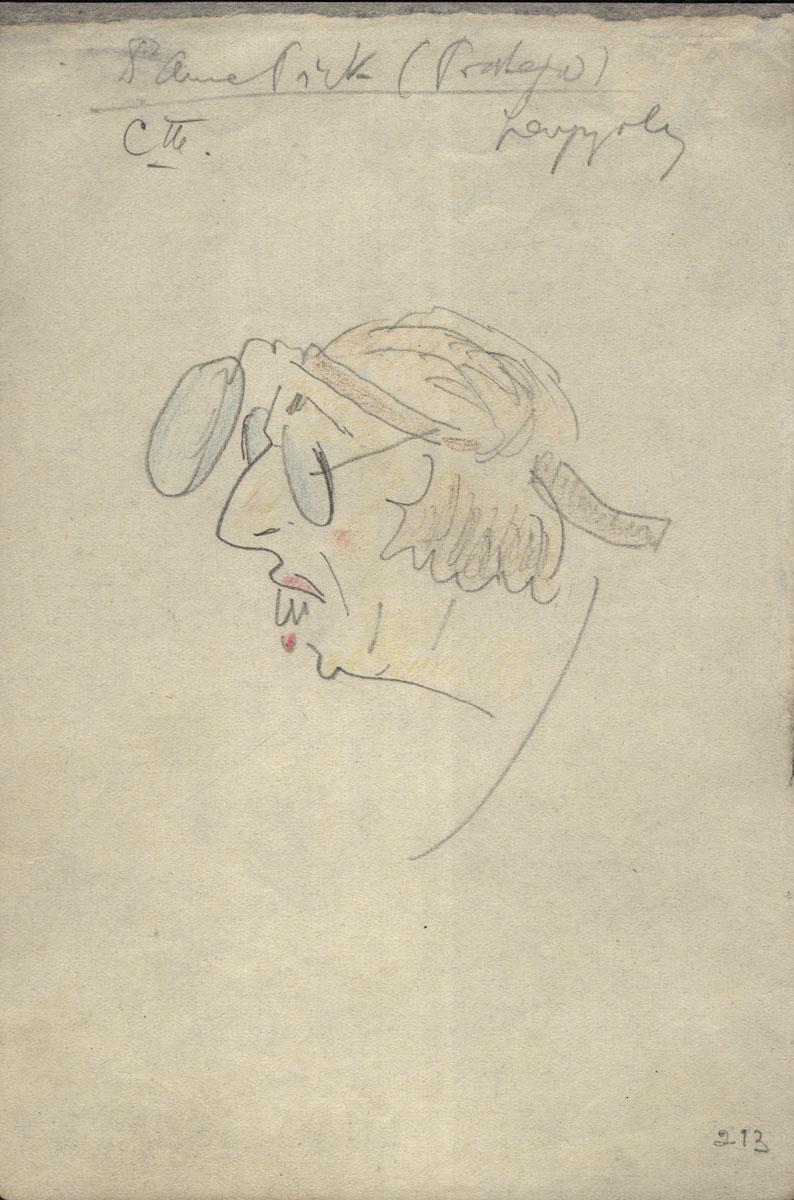
Otorhinolaryngologist.
Born in 1900, Prague, Austro-Hungarian Empire. Worked in Prostĕjov, Moravia, Czechoslovakia. On June 30, 1942, deported to the Theresienstadt Ghetto, where she perished on June 7, 1944.
Colored pencil on paper
19X13 cm
Collection of the Yad Vashem Art Museum, Jerusalem
Gift of Herman Weiss, courtesy of Dr. Stephen Barber, Canada

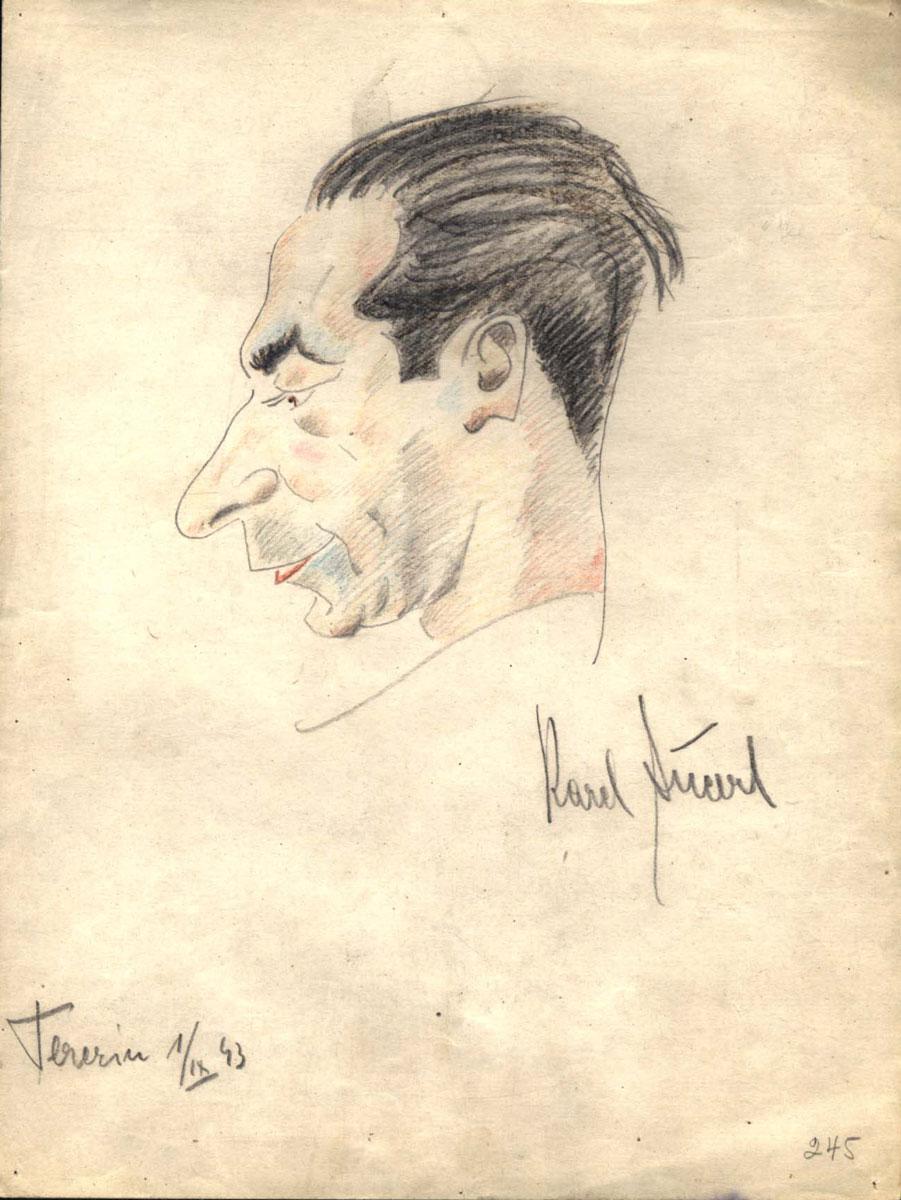
Musician and conducter.
Born in 1908, Tučápy, Austro-Hungarian Empire. On November 1942, deported to the Theresienstadt Ghetto. On October 16, 1944, transported to Auschwitz. After the war lived in Czechoslovakia, where he conducted the Prague Radio Symphony Orchestra until 1950. Conducted additional worldwide orchestras. Died in 1973, Toronto, Canada.
Colored pencil on paper
22X16.6 cm
Collection of the Yad Vashem Art Museum, Jerusalem
Gift of Herman Weiss, courtesy of Dr. Stephen Barber, Canada

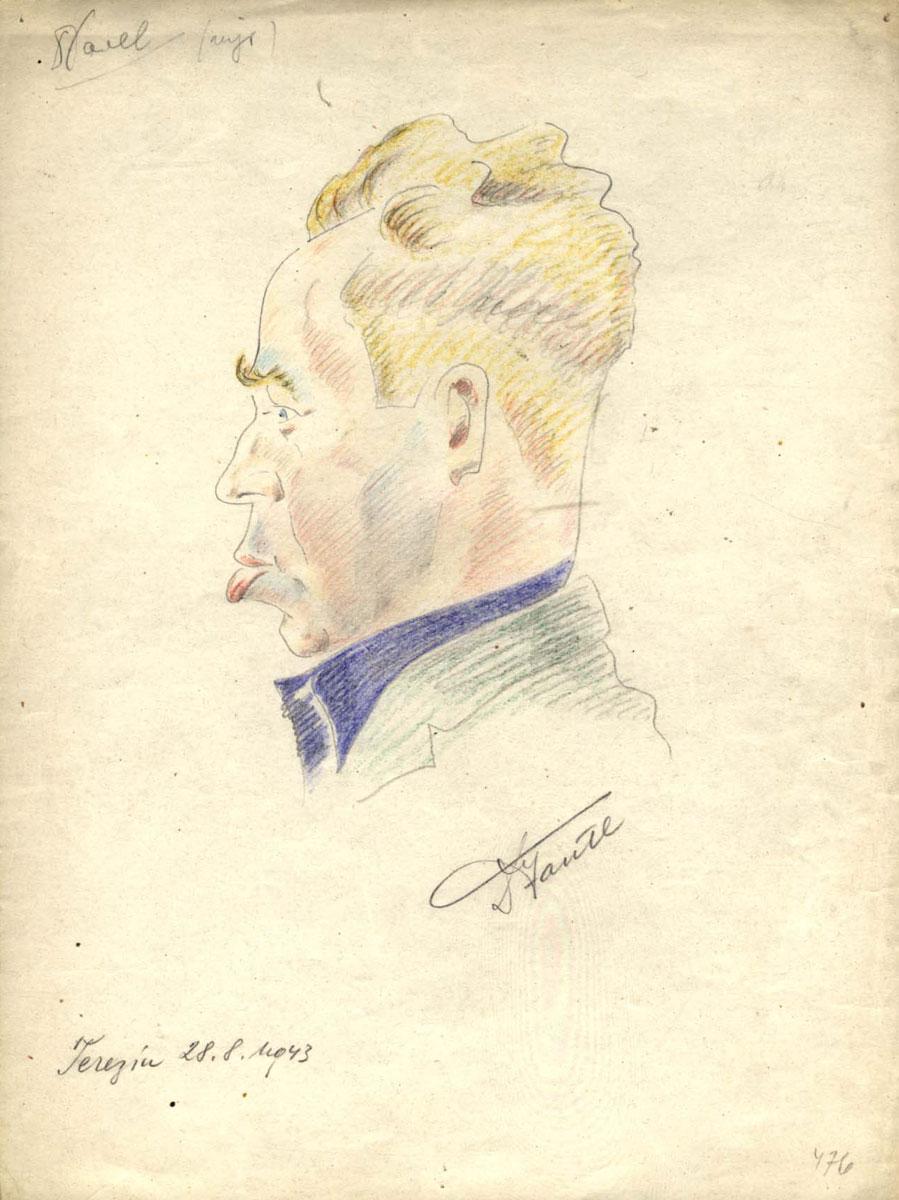
Physician and Medical Officer in the Czech army. Director of the hospital for quarantined typhus patients, in the Theresienstadt Ghetto.
Born 1903 in Prague, Austro-Hungarian Empire. In 1939, he was dismissed from the army on anti-Semitic grounds, and moved to Kolín. In June 1942, deported to the Theresienstadt Ghetto with his family. In the ghetto, he drew dozens of caricatures depicting daily life in the ghetto. On October 16, 1944, transported to Auschwitz and later to a forced labor camp in Germany. He was shot to death after contracting typhus, on a death march, on January 7, 1945, his 42nd birthday.
Colored pencil on paper
22X16.6 cm
Collection of the Yad Vashem Art Museum, Jerusalem
Gift of Herman Weiss, courtesy of Dr. Stephen Barber, Canada

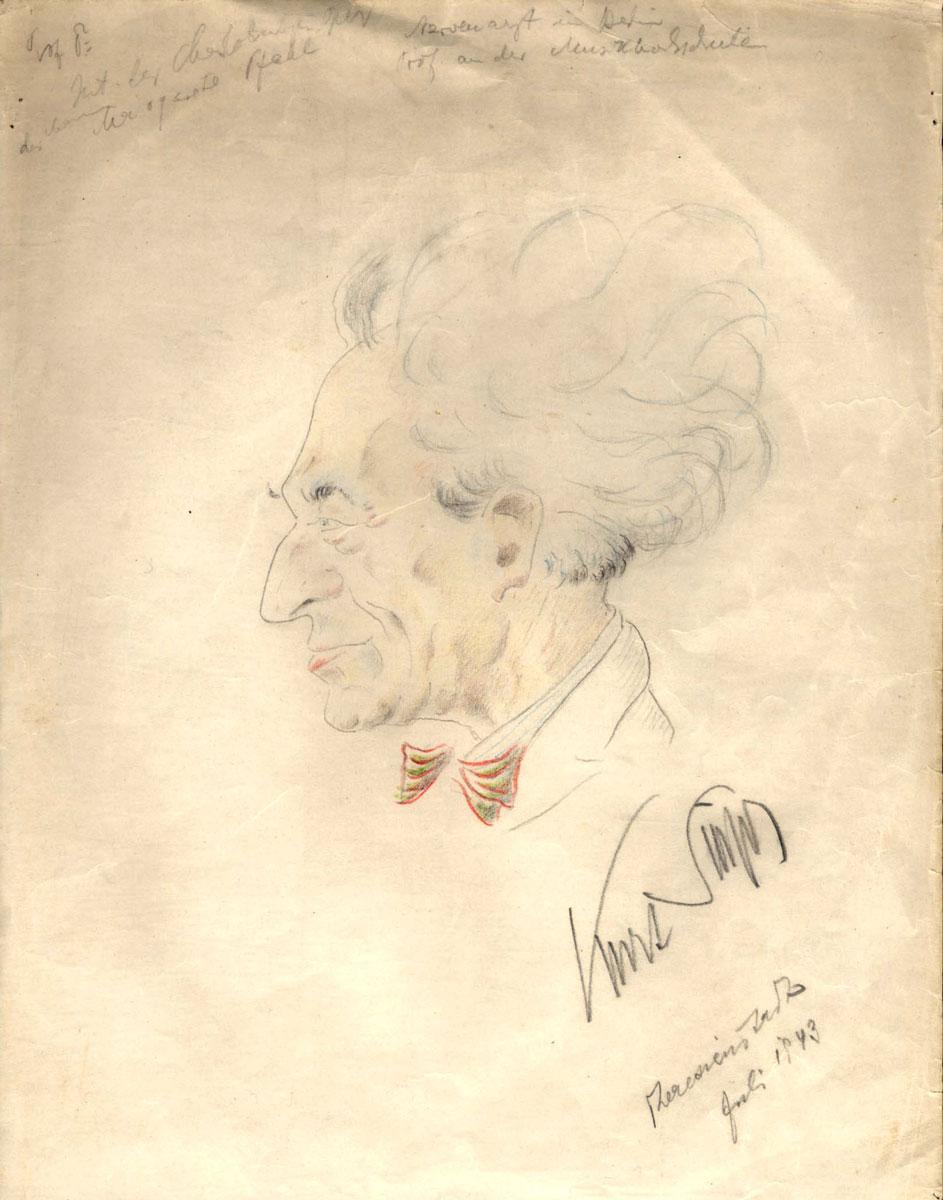
Neurologist, musicologist and conductor.
Born in 1885, Koblenz, Germany. During WWI served in the German army as a physician. Established the Jüdische Kulturbund in Berlin, in 1933. In 1939, he fled to Amsterdam. On April 22, 1943, deported from Amsterdam to the Theresienstadt Ghetto, where he perished on February 7, 1944.
Colored pencil on paper
26.7X21 cm
Gift of the Braun family, courtesy of Cary Kloetzel, Jerusalem







